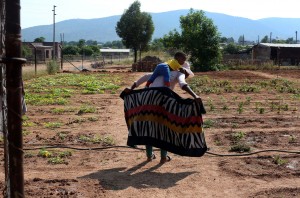When talking about Nigeria and its history, one must take into account how young of a country Nigeria actually is. Nigeria as a whole only dates back to 1914, that’s when the British formed the country by grouping several small northern and southern regions. The region of Nigeria itself has been in existence for a very long time and has been home to many different Africans and their different civilizations. From the 12th century up until the actual creation of Nigeria in 1914 many different groups have lived and governed in the area, but not all of them lived and obeyed the same kings and rulers.
During the 12th century in West Africa, there were no specific countries just various empires, kingdoms and states of sorts. In the southern part of current Nigeria and more towards the west is where archeologists believe one of the first complex societies arose in Western Africa. The site of this called Igbo-Ukwu and was actually believed to have been around since 900 CE but wasn’t as developed. As time passed into the 12th century the area had developed well-organized trade networks with other African ‘states’. In this time trade was one of the more important aspects of life. In the Nigerian area there are a few specific groups, which include the Songhay Empire, the Yoruba Empire and the Kaneem-Borno with a small portion of the Mali Empire mixed in as well. The main ‘Nigerian’ empire was the Yoruba Empire, which is located in modern day Nigeria and is what I’m going to highlight. Within the Yoruba Empire there are three states/kingdoms; State of Ife, Kingdom of Benin and the Kingdom of Oyo.
The State of Ife was established roughly around 1100 CE strategically in the southern area of Nigeria. In the southern part of Nigeria, the state borders the forest-filled southern Nigeria and the Northern savannas making it a hot spot for trade. A big place for ivory, gold, pepper, kola cuts and also slaves the State of Ife stayed supreme until the Kingdom of Benin in 1500 CE rose to power. Today there are currently around one million people who considered themselves as ‘Ife’ while speaking the Yoruba language, which comes from the old state.
The Kingdom of Benin despite the name is located in modern day Nigeria. The kingdom spanned over seven hundred years and was home to many different kings. During the 14th century (1400 CE) a king by the name of Ewuare expanded the kingdom to the west and east, conquering the new territory swiftly. In the 16th century the king at the time, Esigie, expanded even more but that being the last of expansion. For the Kingdom of Benin and most areas at this time trade was a very important part of life. Traders from northern ‘states’ traded horses and salt in exchange for ivory, pepper and palm products from the coastal areas. In the later time of the kingdoms control towards the 16th century trading slaves to Europeans became very profitable.
Lastly, the Kingdom of Oyo located in the southwestern part of modern day Nigeria, which started as a prominent city developed into a vast empire. In the 15th century they surpassed the State of Ife in terms of power but Ife remained a prosperous center for religion. The prime time of the Kingdom of Oyo was during the 17th and 18th centuries. This is when the Kingdom of Oyo expanded to the southern Atlantic coast and vanquished the Dahomey Kingdom, which was located in modern day Benin. Similar to the State of Ife the Kingdom of Oyo made sure their kingdom was in a prominent trade route position, making building a vast kingdom very ‘simple’.


